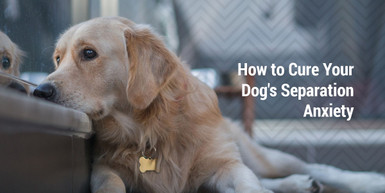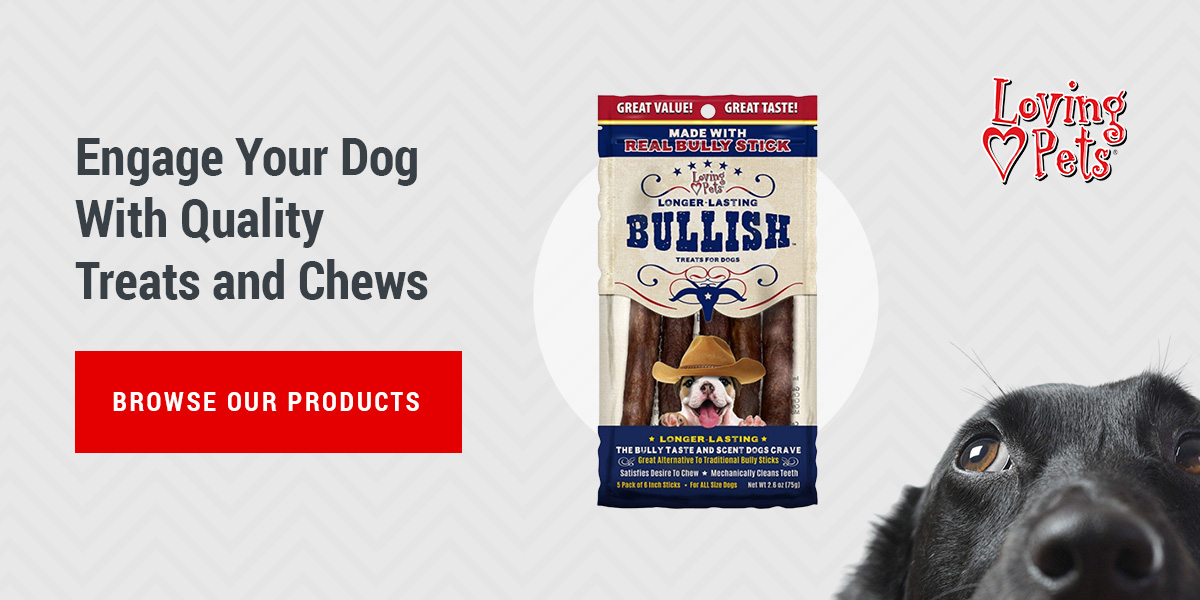How to Cure your Dog's Separation Anxiety
During the workday or when running errands, we frequently have to leave our beloved pets at home. Generally, they are happy and handle this time well. They sleep, play with their toys or find other ways to keep themselves occupied. However, some dogs show signs of separation anxiety, or severe stress when left alone.
If your dog shows signs of stress when alone such as trying to escape, soiling the house and destroying furniture, they may have separation anxiety. Taking the time to help your dog overcome this condition has numerous benefits for you and your precious pet. Below, we break down what this challenge entails and how to stop separation anxiety in dogs.
What Is Dog Separation Anxiety?
Separation anxiety is when your dog or puppy shows signs of severe stress when alone, regardless of how long. It is more than the sad eyes of a dog who wants you to stay home or an untrained puppy's destructive behavior. Unlike typical misbehavior, separation anxiety results from distress.
Causes of Separation Anxiety
It can be challenging to pinpoint why your dog has separation anxiety. However, stress and frustration may be the most significant triggers for dogs who develop separation anxiety. Several things can cause this frustration. Understanding the potential catalyst for your dog can help you treat their separation anxiety.
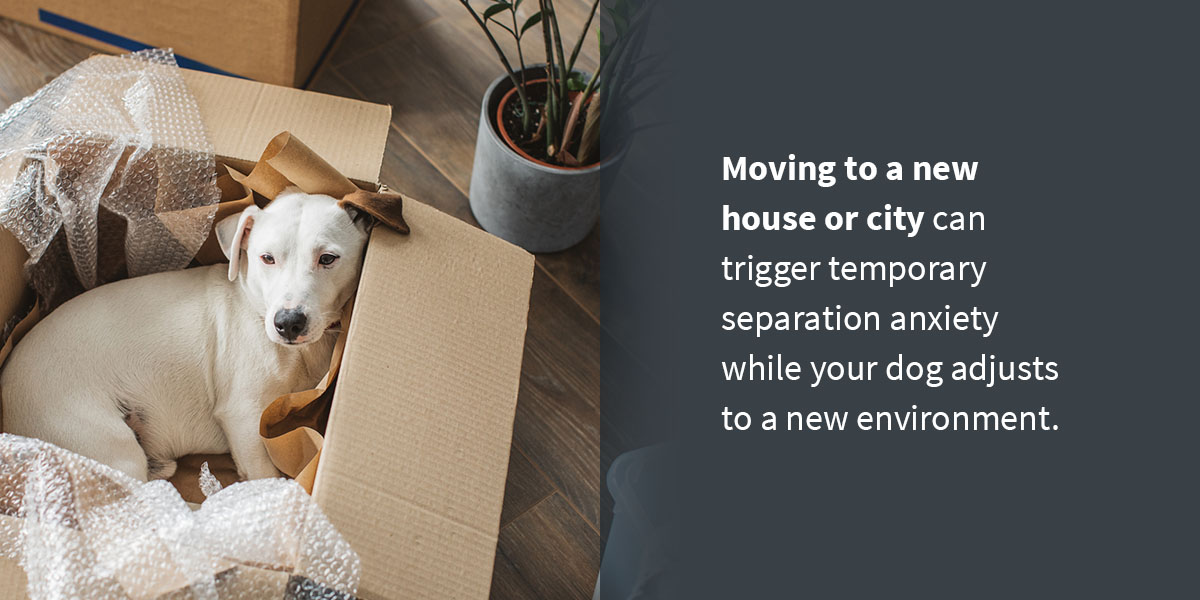
Some common causes of separation anxiety in dogs include the following.
- Changes in the family: Dogs develop close bonds with their human family. If a household member is suddenly absent, it can stress your dog, resulting in separation anxiety.
- Disruptions to routines: Drastic or abrupt changes to your schedule can lead to symptoms of separation anxiety, especially if they cause you too spend less time with your dog.
- Abandonment: Dogs who have experienced abandonment are likely to suffer from separation anxiety, as they may fear their new family will leave them.
- Change in residence: Moving to a new house or city can trigger temporary separation anxiety while your dog adjusts to a new environment.
- Lack of integration: New dogs and puppies need proper integration into a household. If they feel uncomfortable, they may develop separation anxiety.
- Training: To avoid separation anxiety, puppies must learn to be alone from a young age.
Signs of Dog Separation Anxiety
Separation anxiety is a complex condition with various symptoms. Some signs of separation anxiety in dogs can result from other issues or misbehavior, especially if they only happen occasionally. If they frequently occur and with increasing severity, your dog may suffer separation anxiety.
Here are some common signs of dog separation anxiety.
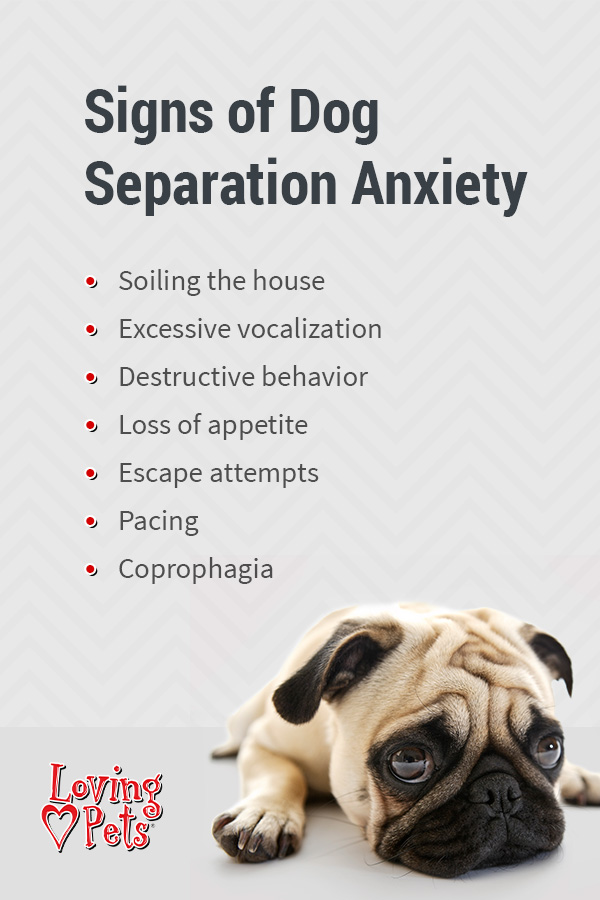
- Soiling the house: Consistent urination when dogs are alone, especially if they are housebroken, is cause for concern.
- Excessive vocalization: Dogs generally howl or bark in response to triggers. Persistent vocalization without any apparent reason can be a result of separation anxiety.
- Destructive behavior: Many dogs with separation anxiety can turn to chewing and destroying objects when left alone. They might chew on door frames, windowsills, furniture and other household goods. They can also claw and scratch doors or windows.
- Loss of appetite: Your dog may stop eating their food or treats when alone or even when you are home.
- Escape attempts: Constant attempts to escape the crate, room or house they are alone in can cause self-injuries, such as broken teeth or damaged nails.
- Pacing: Dogs suffering from separation anxiety may walk a specific path in a set pattern for extended periods. This pattern can be circular or straight.
- Coprophagia: This warning sign of separation anxiety is when a dog defecates and eats their excrement.
- Departure behavior: Your dog may get anxious or agitated when you prepare to leave. They may also get in your way every time you try to escape.
Many of these symptoms occur when dogs are alone, making it challenging to accurately diagnose separation anxiety. If you are worried your puppy may experience separation anxiety, set up a nanny cam or other recording device to monitor their behavior when you are out of the house. The recordings will help you and your vet correctly identify possible causes.
How to Treat Dog Separation Anxiety
Coming home to a filthy house or destroyed belongings is exhausting for you and your puppy. It is also upsetting to see your beloved pet in such distress. Still, treating separation anxiety in dogs can be challenging. As it is a behavioral problem, it will take patience to help your puppy overcome it. The reward of having a happier, healthier puppy is well worth the time spent teaching your pet to deal with separation anxiety.
Two leading goals in treating separation anxiety are encouraging your puppy to relax when left at home and helping your dog become less reliant on you. Fortunately, you can use several methods to help your dog achieve both goals.
Here's what to do if your dog has separation anxiety.
Proactive Stimulation
Proactive stimulation is essentially play and exercise. Stimulating your dog before you leave the house can help them feel more settled when alone. Proactively stimulating your dog before departure can help divert their attention and put them in a more relaxed emotional state. There are three types of proactive stimulation — sensory, physical and mental.
- Sensory: This tactic involves stimulation that engages your dog's sense of smell, taste and hearing. Taking your dog for more frequent or lengthier walks allows them to see, hear, smell and engage with different stimuli. Providing this stimulation shortly before you leave can help relax your pet. You can also leave your clothes with your smell in your dog's favorite spots to keep them calm throughout the day.
- Physical: Choose the exercise your dog enjoys and best fits your schedule and abilities. These can include running, walking, Frisbee, swimming, rollerblading or chasing after a ball. Rigorous activity before you leave can reduce distressed behavior in your dog. Leave toys for your dog to play with during the day.
- Mental: There are a few ways to stimulate your dog mentally. Spend 10 to 30 minutes daily practicing basic commands with your dog. As they get better at performing known commands, start teaching them new ones. You can also hide food and other treats around your house to help keep your dog intellectually stimulated throughout the day.
Training and Behavior Modification
As separation can be an impulsive behavior, focusing on training and behavior modification can help your dog overcome their anxiety. Training is beneficial for adopted or rehomed dogs suffering from abandonment issues. Even if you have already trained your dog, a professional trainer can help your dog control their impulses better by focusing on patience when feeding, not jumping up when greeting guests and proper on- and off-leash walking.
To focus on behavior modification, you should work with an experienced trainer or behaviorist. They can develop a modification program that suits your dog's needs. They can also guide you through the process. Training and behavior modification aim to help your dog reduce their anxiety and give them the confidence to stay home alone. It can also help address any negative associations with your departure routine.
Medications and Homeopathic Remedies
Some medications and homeopathic remedies can help ease your dog's anxiety. Talk to your vet about available medical treatments. Recently, some anti-anxiety medications have received approval to treat separation anxiety in dogs. If you'd like to try homeopathic remedies, check in with your vet to ensure they are safe for your dog to consume.
Alter Your Departure Routine
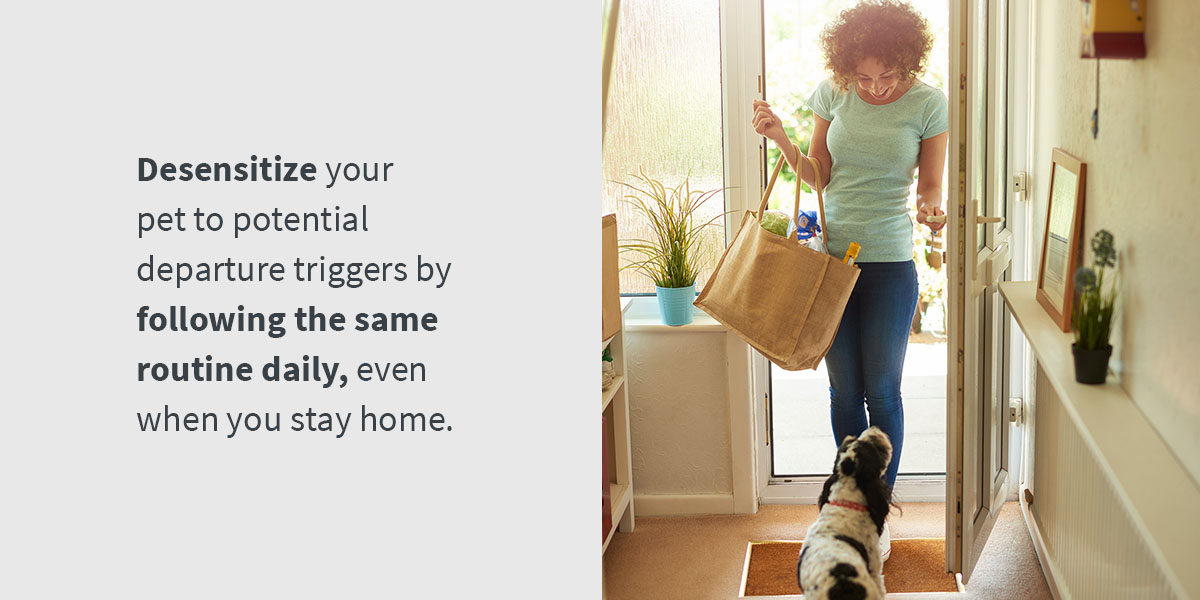
Most departure routines are ritualistic, as they typically take place in predictable patterns. When working with a separation-distressed dog, you want to reduce the awareness and predictability of impending departure. You can do this by restructuring or reordering activities that are part of your departure routine.
Different parts of getting ready to leave the house can trigger your dog's anxiety, so changing or removing them can help them feel more settled before you leave. It may be possible to desensitize your pet to potential departure triggers by following the same routine daily, even when you stay home. Doing so may help your dog develop more positive reactions to these actions and can be part of a behavior modification program.
Containing Your Dog
One way to help minimize destruction in your house is by containing your dog in one room or area. You can put your dog in the safest room and shut the door. Other containment methods include using a playpen or baby-proof gates and fences to block off a specific part of your house. In some cases, dogs might benefit from being in a crate or crate training if it makes them feel safe. Containment is primarily for dogs who are destructive, soil the house or risk injuring themselves when they attempt to escape.
Engage Your Dog With Quality Treats and Chews
Treating separation anxiety is complex and often requires a combination of methods, including training, medication and stimulation. Treats and chews can reward positive behavior while keeping your dog occupied throughout the day. Loving Pets has a wide selection of treats, chews and bones you can use as tools to address your dog's separation anxiety. Browse our ranges today!

